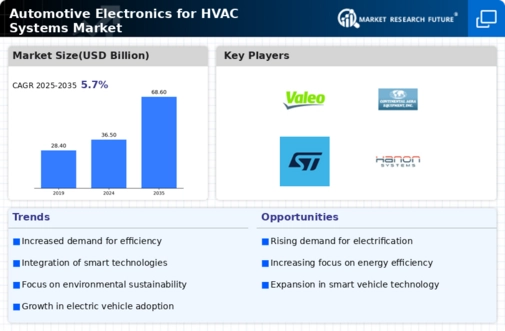By Region, the study provides market insights into North America, Europe, Asia-Pacific, Rest of the World. In terms of revenue, Asia-Pacific held the largest share of 52.3% in the Automotive Electronics for HVAC Systems market in 2022 and is expected to maintain its dominance during the forecast period. The continuous demand for HVAC systems and increasing affordable vehicle production drive the automotive electronics for HVAC systems market in Asia-Pacific. Asia-Pacific is expected to witness the highest growth because the manufacturers in this region offer high-cost reductions, owing to the availability of low-cost labor and raw materials.
Furthermore, the region comprises countries such as India, Japan, China, and others. India and China are the largest emerging economies accounting for a decent part of the total vehicle production globally. The presence of a large electric and smart vehicle market in China makes it a lucrative market for automotive electronics for HVAC systems. In India, the government has undertaken various initiatives to promote the adoption of electric vehicles. The continuous and advanced innovation by leading players such as Asti Corporation, Sensata Technologies, and Mitsubishi is expected to drive the growth of Asia-Pacific automotive electronics for HVAC systems market.
The Asia-Pacific region is potentially the largest automotive aftermarket for HVAC systems, as a large proportion of the vehicle fleets in this region have the system installed. In Japan, most standard cards are fitted with a dual or tri-zonal climate control system. Hence, the Asia-Pacific region is expected to dominate the Automotive Electronics for HVAC Systems Market.
Figure3: Automotive Electronics For Hvac Systems Market Size By Region 2022&2032

Source: Secondary Research, Primary Research, Market Research Future Database, and Analyst Review
Further, the major countries studied in the market report are the U.S., Canada, Germany, France, the UK, Italy, Spain, China, Japan, India, Australia, South Korea, and Brazil.
The increasing adoption of Electric vehicles across Europe, along with the extreme climate conditions in this region, promotes the automotive electronics for HVAC system market. The region is expected to have significant growth in the automotive aftermarket due to the increasing aging passenger vehicles and the presence of leading manufacturers such as Mahle Group, Denso Corporation, Valeo Group, and Behr-Hella Thermocontrol GmbH. The market is expected to boom exponentially. Legislative reforms and policies to promote the adoption of electric vehicles in Europe contribute significantly to the market growth of automotive electronics for HVAC systems.
Due to their drastically varied climate conditions, the increasing need for thermal systems and climate control features in vehicle fleets in Europe created a conducive market for the growth of the market in this region.
North America remains a long-term growth market for the automotive electronics for HVAC systems market, particularly in the US, due to its expected volume of automotive production, an increasingly growing market of electric vehicles, and the increasing adoption of vehicle safety and efficiency technologies. The North American automotive electronics for HVAC systems market has increased because of several factors, such as its significant OEM and aftermarket, aging light vehicle park, and the higher average of long-distance travel in vehicles. Extreme weather conditions, either summer or winter, have been a major factor in the increased HVAC market in passenger cars.
Most top-selling passenger cars and electric vehicles are fitted with automatic HVAC control systems, increasing demand for automotive electronics in the HVAC systems market.
The Rest of the World’s automotive electronics for HVAC systems market is driven by the increasing adoption of thermal and climate control features for luxury and comfort and the availability of compact and efficient HVAC systems in all economic vehicle fleets. The Rest of the World consists of the Middle East, Africa, and South America. In the Middle East, highly extreme climatic conditions create a necessity for HVAC systems in automotive in this region.
The increased disposable income and changing lifestyle in the Middle East promote customization and the drive for luxury features in automotive vehicles, especially passenger cars and high-end cars, thereby driving the automotive electronics for HVAC systems market.
















Leave a Comment